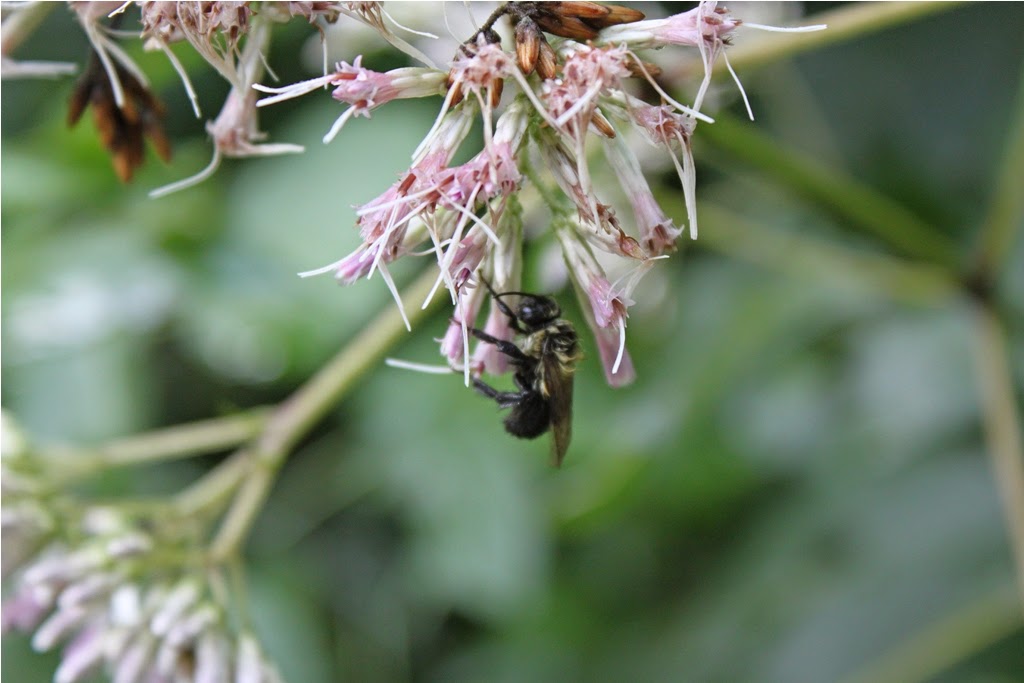 |
| Honey bee on a joe pye weed flower |
Since I first heard about honey bees’ colony collapse disorder, I’ve paid attention to bees. Before that, I pretty much ignored them and avoided them when possible. Since 2006 when the disorder first became public knowledge, I keep a lookout for them and try to gauge if I am seeing more or fewer of them.
The winter of 2012-13 saw bee colony losses above 31%, slightly higher than the previous six year average of 30%. For the purposes of their studies, the US Dept. of Ag. considers "winter" losses to run from October through the end of April. One difference noted by the researchers was that more colonies appeared to be dwindling away, rather than outright and sudden collapses. Winter 2013-14 produced better results, with colony losses at just over 23%. Despite the improvement, the losses this past winter are still above the 18% that beekeepers consider economically sustainable, and researchers still don’t know why 2013-14 was better. It may be nothing more than a yearly fluctuation.
While colony collapse disorder is complicated and seems to have multiple causes, one of the largest contributors is the varroa mite, an Asian bee parasite that first appeared in the U.S. in 1987.
This summer I’m seeing fairly average numbers of honey bees. I see them on the woodland blooms around the cabin, such as this joe pye weed in today’s photo. The next door orchard is less than a mile as away as the bees fly, so certainly some of the ones that are around Roundtop are from there, though I also occasionally find a hive tree. It’s a good day when I can start one by seeing a few honey bees. It makes me feel as though there’s still some hope for the world.








2 comments:
I, too, watch for bees and celebrate a little inside when I see one.
I have seen almost none. Hiked with a family on Saturday that said their whole hive died over the winter.
Post a Comment